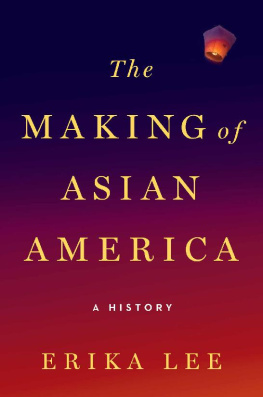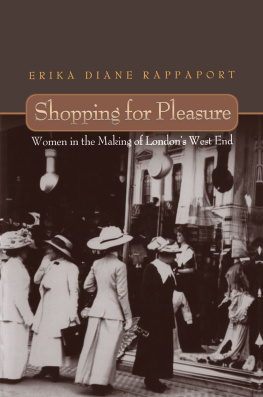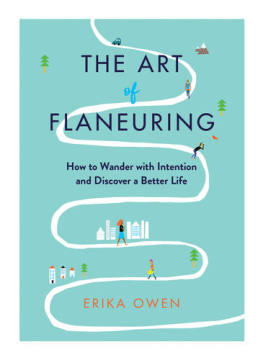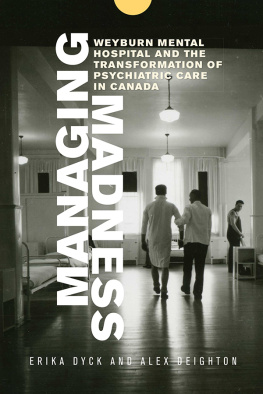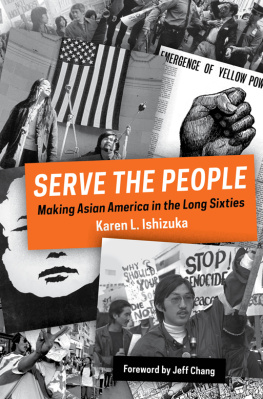Erika Lee - The Making of Asian America: A History
Here you can read online Erika Lee - The Making of Asian America: A History full text of the book (entire story) in english for free. Download pdf and epub, get meaning, cover and reviews about this ebook. year: 2015, publisher: Simon & Schuster, genre: History. Description of the work, (preface) as well as reviews are available. Best literature library LitArk.com created for fans of good reading and offers a wide selection of genres:
Romance novel
Science fiction
Adventure
Detective
Science
History
Home and family
Prose
Art
Politics
Computer
Non-fiction
Religion
Business
Children
Humor
Choose a favorite category and find really read worthwhile books. Enjoy immersion in the world of imagination, feel the emotions of the characters or learn something new for yourself, make an fascinating discovery.
The Making of Asian America: A History: summary, description and annotation
We offer to read an annotation, description, summary or preface (depends on what the author of the book "The Making of Asian America: A History" wrote himself). If you haven't found the necessary information about the book — write in the comments, we will try to find it.
The Making of Asian America: A History — read online for free the complete book (whole text) full work
Below is the text of the book, divided by pages. System saving the place of the last page read, allows you to conveniently read the book "The Making of Asian America: A History" online for free, without having to search again every time where you left off. Put a bookmark, and you can go to the page where you finished reading at any time.
Font size:
Interval:
Bookmark:

Thank you for downloading this Simon & Schuster eBook.
Join our mailing list and get updates on new releases, deals, bonus content and other great books from Simon & Schuster.
C LICK H ERE T O S IGN U P
or visit us online to sign up at
eBookNews.SimonandSchuster.com

For my students
T he 19.5 million Asian Americans in the United States today make up almost 6 percent of the total U.S. population. They increased in number by 46 percent from 2000 to 2010 and are now the fastest-growing group in the country. They are settling in places that have traditionally welcomed immigrants like New York City, San Francisco, and Los Angeles, as well as in other cities where such large-scale immigration is new: Atlanta, Las Vegas, Houston, Phoenix, and Minneapolis-St. Paul. Asian Americans are changing the face of America. But most people know little about their history and the impact that they have had on American life.
The Making of Asian America tells this story.
Over the centuries, millions of people from Asia have left their homes to start new lives in the United States. They have come in search of work, economic opportunity, freedom from persecution, and new beginnings that have symbolized the American Dream for so many newcomers. During the nineteenth and twentieth centuries, Asian immigrants joined millions of others from around the world to turn the United States into a nation of immigrants. In the past fifty years, more have come as a result of new immigration policies, as refugees following the wars in Southeast Asia, and as part of increasing globalization.
The making and remaking of Asian America is the story of these global journeys and histories. This book digs deep into the historical record with sources like the first world atlas (printed in 1570), newspaper accounts, and long-forgotten immigrant autobiographies. It also explores contemporary American life through the latest census statistics, policy reports, and social media campaigns. There is an extraordinary range of Asian American lives and experiences.
Consider, for example, Afong Moy, a nineteen-year-old beautiful Chinese lady who arrived in New York in 1834 aboard a ship full of snuffboxes, walking canes, and fans imported to satisfy Americans taste for imported Chinese goods. She was the first-recorded Chinese woman to arrive in the United States. A decade or so later, Jacinto Quintin de la Cruz and other Filipinos founded a fishing village in Barataria Bay south of New Orleans. They named it Manila Village to remind them of the home they left behind. While South Asian and Chinese indentured laborers were being brought to the Caribbean, Peru, and Cuba, my great-great-great-grandfather joined another stream of Chinese heading across the Pacific to seek their fortunes in the California Gold Rush. In 1919, Shizu Hayakawa left her home in Japan as a picture bride to marry a man she had never met. Around the same time, Whang Sa Sun and his wife, Chang Tai Sun, fled from Japanese rule in their native Korea and arrived as refugees. Vaishno Bagai, an Indian nationalist, also sought freedom in the United States and entered the country through Angel Island with his wife, Kala, and their three children. By the 1920s, Francisco Carino had learned from his teachers in the Philippines that America was full of riches and glory, so he too boarded a ship bound for the United States.
Small numbers of family members, students, and professionals began to come after World War II and during the Cold War. They have been joined by even more immigrants and refugees since 1965. Chiyoko Toguchi Swartz married an American soldier and left her home in Okinawa in 1966. That same year, Kang Ok Jim was adopted from Korea and brought to Palo Alto where she grew up as Deann Borshay. Fear of persecution forced Le Tan Si and his family to flee from Vietnam in 1979 while Yeng Xiong joined an exodus of Hmong from Laos after the communists took control of the country. Korean engineer Han Chol Hong arrived in 1983 and after failing to find work, he opened a store in South Central Los Angeles. Vicki Diaz, originally from the Philippines, works as a housekeeper in LA to support her family back home. Rashni Bhatnagar, from India, recently joined her husband, who is an IT worker here on a temporary visa, and Chinese students are now the largest group of international students in the United States.
These Asian American journeys may not be well known, but they have been central to the making of Asian America and of America itself.
Broadly speaking, Asian Americans are people who can trace their roots to countries throughout East Asia, South Asia, and Southeast Asia.
Asian Americans have differed not only in their country of origin, but also in their immigration and generational status, class position, religion, and gender. These differences have resulted in distinct experiences and histories. It is fair to ask whether there is even one Asian America, or one Asian American history. Asian Americans with long roots in this country may wonder what they have in common with todays recent arrivals. Similarly, new Asian immigrants and their descendants may not think that the histories of earlier Asian Americans are relevant to their own experiences. But they should. There is great diversity within Asian America and across Asian American history, but there are also significant similarities and connections. The experiences of previous generations shaped the world that Asian Americans live in today. Likewise, new immigration has helped us see the past in fresh ways. Both the diversity and the shared experiences of Asian Americans reveal the complex story of the making and remaking of Asian America. There is not one single story, but many.
Asian American history begins long before the United States was even a country and has its roots in world history. Asia and the Americas first became connected through European colonization and global trade after Christopher
Beginning in the sixteenth century, Spanish trading ships known as Manila galleons brought Asian sailors, slaves, and servants to present-day Mexico as part of the creation of Spains Pacific Empire. Thereafter, Asian immigration followed the ebbs and flows of global history. The rise of the British Empire led to the movement of South Asian indentured laborers from British-controlled India to British colonies in the Caribbean while Chinese coolies were sent to Cuba after the end of the African slave trade. And as the United States became a world power and expanded its reach into Asia beginning in the late eighteenth century, Asians have steadily come to our shores. Seen through the lens of world history, Asian American journeys are part of longer and larger patterns that help us understand the making of America in a global context.
The history of Asian Americans is also immigration history. The most common view of immigration to America is still framed around the push and pull idea: conditions in one countrylike war, natural disaster, civil unrest, and economic instabilitypush desperate peoples out while the United States pulls them in with better-paying jobs, land, and freedom from persecution. Once uprooted, these immigrants successfully transplant themselves into the United States where they achieve American dreams of success.
But this is just part of the story. We know that people and families move for complex reasons. Asian immigration has been particularly tied to the U.S. presence in Asia. Americans first crossed the Pacific Ocean in search of trade, investment, and empire. Nineteenth-century trading vessels gave way to massive transpacific steamships that soon brought both Asian goods and laborers to the United States. American labor recruiters and transportation companies encouraged and facilitated Asian immigration into the early twentieth century. Immigration to the United States became an economic lifeline for many families on both sides of the Pacific Ocean even after immigration laws greatly restricted and even excluded Asian immigrants from the country.
Font size:
Interval:
Bookmark:
Similar books «The Making of Asian America: A History»
Look at similar books to The Making of Asian America: A History. We have selected literature similar in name and meaning in the hope of providing readers with more options to find new, interesting, not yet read works.
Discussion, reviews of the book The Making of Asian America: A History and just readers' own opinions. Leave your comments, write what you think about the work, its meaning or the main characters. Specify what exactly you liked and what you didn't like, and why you think so.

